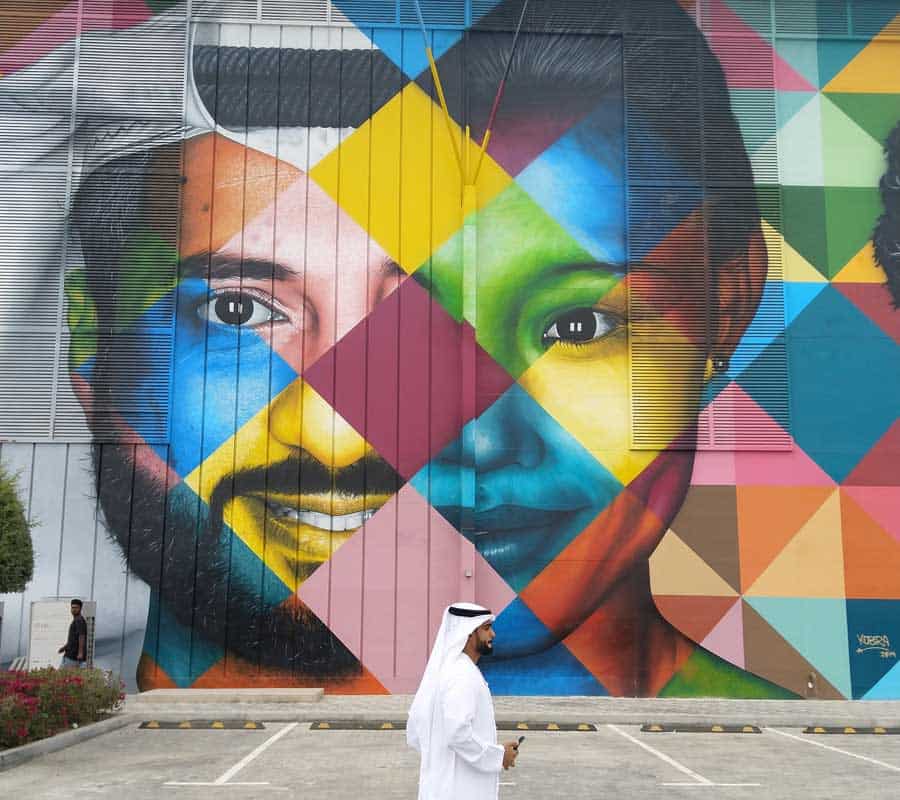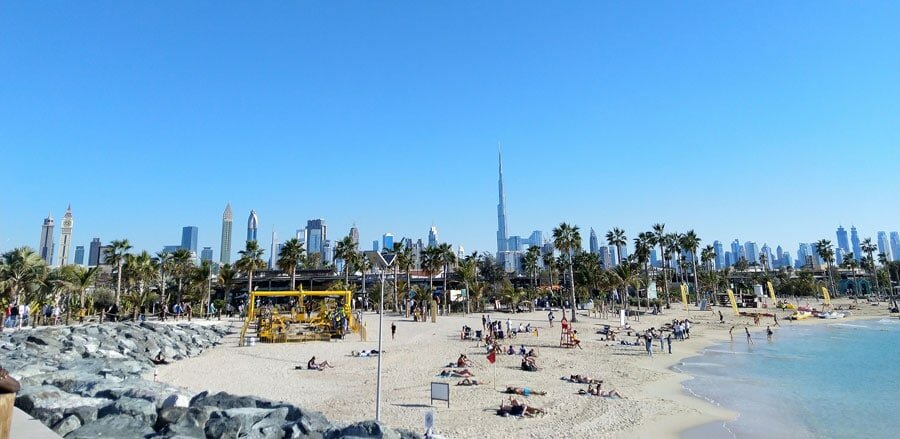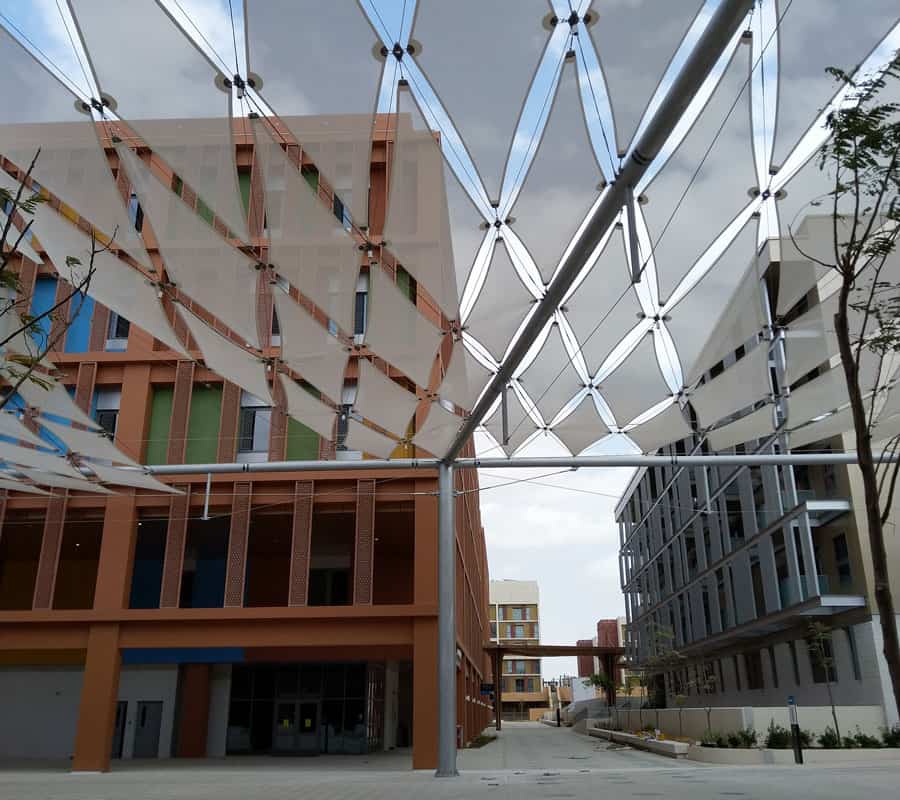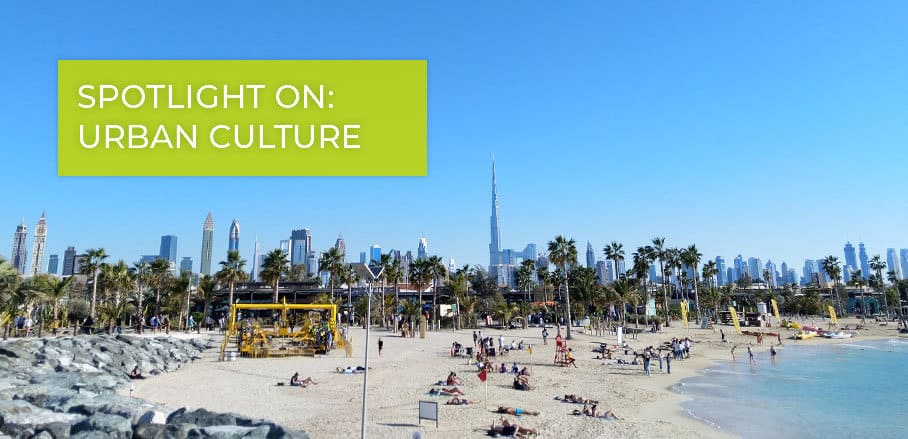Creating Culturally Vivid Urban Spaces and Places – Lessons from the 10th World Urban Forum
In February 2020, one of the most important events for urban planners took place: The 10th World Urban Forum. This year, it was Abu Dhabi’s turn to host the conference with an attendance of about 13,000 international guests and the theme “Cities of Opportunity: Connecting Culture and Innovation”. While one might argue that cities have more pressing issues to tackle these days, such as climate change, inequality, or immigration, there were some interesting lessons to be learned, Laura von Puttkamer reports from Abu Dhabi.
The conference asked how culture and innovation can further Sustainable Development Goal 11 – to make cities and human settlements inclusive, safe, resilient and sustainable. In this regard, the interlinked topics of culture and innovation, representing past and future, can offer valuable lessons.
Connection turned out to be another important topic during WUF10, increasingly making it clear that cities want to learn from each other. We need to connect to other people to learn from them – a new culture of learning. UN Habitat will support these efforts by launching the Urban Agenda Platform website in summer 2020.
The Role of Art and Culture for Vibrant Cities
Art and culture are important for improving cities, for making them more inclusive, more liveable, and more recognisable. The questions are: who are the relevant actors, who decides which art and culture is relevant? In Abu Dhabi, for example, even the street art is controlled by government:

Internationally well-known street artist Cobra was commissioned to paint this mural titled “Tolerance” in Abu Dhabi. © Laura von Puttkamer
In cities of the Global South, there are issues much bigger than funding art and culture. However, it is important to consider the economic benefits of strong cultural institutions, as well as the peace-making and community-building elements of art and culture. Art is able to reach places where policy makers cannot go – provided that certain types of art, like street art, are not labelled as criminal offense.
Looking at the WUF 10 host country again, it is interesting to compare Abu Dhabi and Dubai, the two main cities of the United Arab Emirates (UAE). Whereas Abu Dhabi seems “greyer” and almost devoid of people, Dubai has some more vibrant and interesting public spaces. This is achieved by consciously planning for the people and making culture come alive. The country’s culture may be a very young one, with the UAE having been an independent country for not even 50 years, but you can see culture coming alive. This does make the city more inclusive and liveable, as SDG 11 demands.

This new public space in Dubai is a busy hub by the beach, allowing everyone to live and play. © Laura von Puttkamer
However, there are other aspects of SDG 11 to be considered, which the conference did not cover extensively. Safety, resilience, and sustainability are much more than buzz words now, but sadly, in many countries they are mainly used to justify other ambitions.
The Role of Innovation for Vibrant Cities
Thinking about connected, culturally attractive, and innovative cities, WUF10 has offered many examples of the strengths of technology. In the UAE, Masdar City is the main showpiece of how far smart cities can go. This neighbourhood was designed by Norman Foster’s company and looks very impressive. However, its master plan has resulted in an empty city. It was not designed for a vibrant life, which shows in the absence of actual inhabitants. Ghost towns can be the result of too much innovation, it seems.

Masdar City looks impressive, but no one wants to live there. © Laura von Puttkamer
While a culture of innovation is crucial for furthering SDG11, the question is how to best go about it. Master plans might not be the best idea – instead, it is about making culture and innovation come alive and stay alive. One interesting insight that WUF10 had to offer was the role of youth in achieving SDG 11. It can be connected to street art, but also to many other important elements of a truly great city, such as vivid public spaces, green spaces, festivals, a music scene, sports, a cycling culture, interesting shopping malls, and more participation.
Vibrant cities need culture to come alive and to stay alive. Therefore, we should find new ways of anchoring culture to its inhabitants. Youth ambassadors, as suggested during the conference, are a great first steps towards inspiring action in youth. Working with children to improve urban planning, as is done for example by the Lego Foundation , can also further the goals of SDG 11. A culture of volunteering will make any city more vibrant and interesting.
The World Urban Forum 10 has successfully served as an occasion to make us think about how to create a culture of vivid urban spaces and places that bring joy to their inhabitants.
- Where the Rubber Hits the Road: Localising Climate Action in Cities - 1. March 2024
- Cities and Climate Change: The Buildings Breakthrough at COP28 - 12. December 2023
- Policy and Financing for Net Zero Carbon Buildings: Insights from COP27 - 18. November 2022
